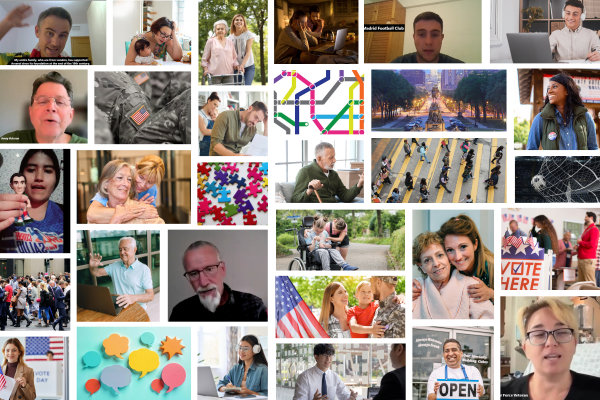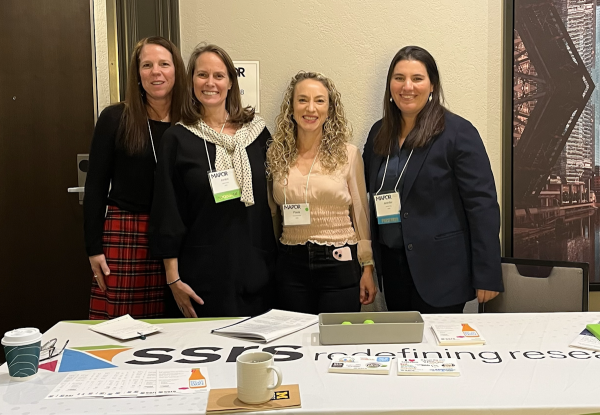Early September marked my first time attending the Social Theory, Policy & the Arts Conference, hosted at Drexel University in Philadelphia. Among the highlights was an opening panel on the state of research funding – featuring Sunil Iyengar from the National Endowment for the Arts, Elinor Haider from the Pew Charitable Trusts, Bronwyn Bevan of the Wallace Foundation, and Leah Reisman of the Barra Foundation.
The panel was surprisingly optimistic, while also offering honest insights into the pressure today’s funders face to support research that bridges the research-practice divide. More than ever, research investments need to have a measurable return, whether through changed policy, measurable population outcomes, or program improvements that can be implemented in the real world. For that reason, proposals that intentionally and clearly connect research with real-world practice improvements and outcomes jump to the top of the “to be funded” pile.
It got me reflecting on how as a research professional I can help partners and clients deliver on that goal. How can we help ensure data collection efforts are designed to bridge research and practice? It’s a topic I’ve thought a lot about in my 25 years in social policy research. Below are tips for achieving this often elusive goal:
Don’t stop at descriptive.
Descriptive data answers the WHAT question, but it is rarely enough on its own to justify a large investment. Documenting reality in a way that rigorously defines the contours of an issue (typically through surveys that can measure a problem at scale) is a critical first step toward real-world improvements, but it’s table stakes. Research design that stops at WHAT has limited value to practitioners, most of whom are already painfully familiar with the problem needing to be solved. The WHAT may be new or surprising or interesting to people not immersed in or affected by an issue, and it can be a useful tool for focusing public attention, but on its own it cannot shape effective action. Descriptive research opens the door. Insightful research walks us through it.
Design research to capture the WHY – and the WHY NOT.
Describing the WHAT needs to be combined with deeply understanding the WHY. Why has this issue, harm, or good/bad outcome come about? For my money, there is no substitute for well-designed qualitative research to unpack the unique human motivations, perceptions, thought processes, and needs driving the outcomes we see on the surface. And it is critical in this part of the research to explicitly uncover the WHY NOT, by intentionally designing data collection that can shine a light on unacknowledged obstacles and challenges.
Behavioral choices are often an unconscious path of least resistance, but research subjects are better able to explain why they do something than why they do not. The best research intentionally explores that negative space by asking participants to consider alternative ways of doing things and reflecting on why those paths are not taken. It’s surprising how often the most critical driver of an outcome is an as-yet-seen obstacle that can be easily rectified! You wouldn’t stop a novel at chapter one. So why stop your research at WHAT?
Move beyond SO WHAT to SO WHAT NEXT?
Like many researchers, I was taught in graduate school that the best research—and the best researchers—are able to answer the SO WHAT question. They articulate clearly why and how the research matters, how it can be used, the difference it can make in the world. I would argue we need to go beyond the SO WHAT question to SO WHAT NEXT? The latter better captures the imperative need for informed, impactful action that can be implemented immediately. What is an immediate potential action your research will either encourage or discourage? What is the immediate next step a practitioner (or funder) could take based just on this work?
Whether by crystallizing a small pivot or change to be made, identifying a success that can be scaled up or leaned into further, or uncovering a disconnect between stated program goals and measured outcomes, the data should support concrete and fasible action of some kind. If the data you gather cannot answer the “what next?” question, something is missing. ‘So what’ is the analysis. ‘So what next’ is the strategy derived from the analysis.
Finally, design for influence as well as impact.
Impact is the short-term benefit or effect of the research, the change that can be implemented immediately to move the needle on an issue or program. Influence is long-term knowledge building that shapes an entire field or practice, creates schools of thought within a discipline, and shines a light for others to follow. A single, well-designed research project can do both. I equate this to the importance of designing a survey to generate both a “headline” and a deep, meaningful narrative. I always review a survey instrument with an eye toward whether
- the obvious topline questions are clearly asked and answered and
- all of the additional, critical analytic variables are being captured to tell the full story underneath those headline numbers.
We should similarly review all research with an eye toward whether the data have the promise to generate both impact and influence. Will the data answer the “so what next?” next step question and help move a field forward by stress testing and expanding on prior knowledge and cannon? The best research doesn’t just inform—it empowers!
This may seem like a lot to ask of a single research project.
But with thoughtful design conversations that include practitioners, funders and researchers, and deliberate (sometimes ruthless) design choices that focus the project on clear objectives, it is doable.
Great research doesn’t just describe, it drives. When we dig into the WHY and the WHY NOT, we uncover the forces behind behavior, not just the patterns. When we move from SO WHAT to SO WHAT NEXT, we shift from insight to action. And when we design for influence as well as impact, we ensure our work doesn’t just land, it leads.
In a time when access to reliable data is increasingly uncertain, it’s not enough to inform. We must inspire, persuade, and propel change. That’s the kind of research that matters—and the kind that lasts.








